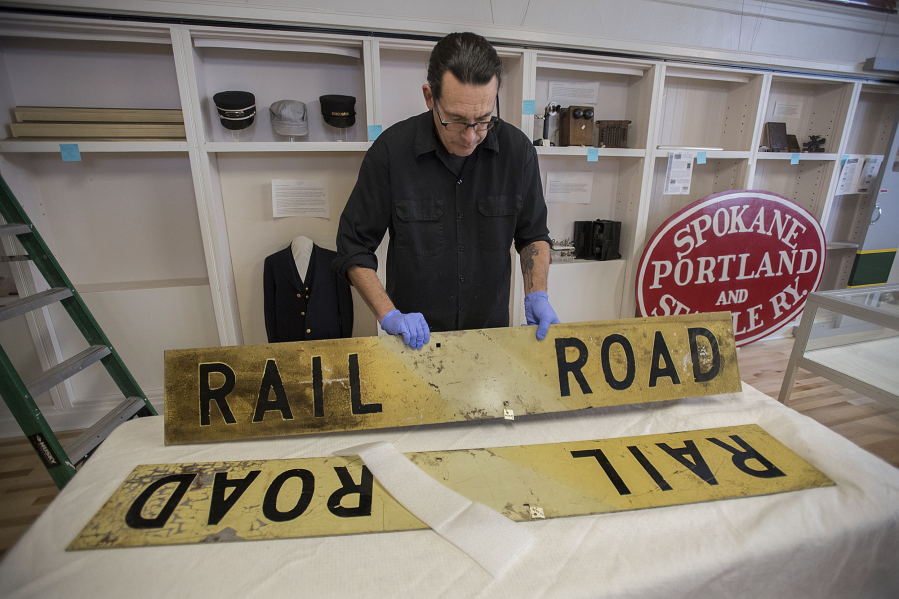For decades, a lot of people in this area found steady employment working on the railroad.
An exhibit that opened Saturday at the Clark County Historical Museum illustrates the impact of the regional rail operations.
The exhibit — “All Aboard! Clark County Rides the Rails” — focuses on the old Spokane, Portland and Seattle Railway.
But the railroad could be more than a way to make a living: Some families actually wound up living on the rails. And when a blizzard paralyzed traffic in the Columbia River Gorge, a railroad caboose became an improvised ambulance.
These are a couple of stories retired railroaders have shared with The Columbian over the past few years.
In a 2014 piece on Wishram’s centennial, Lewis Record recalled that his family didn’t just live in a railroad town: They lived in a railroad boxcar.
He can still remember when his former wife strung a clothesline from their boxcar home and tied the other end to a nearby car parked in the freight yard.
“All of a sudden, those cars took off, and our laundry went down the track.”
Boxcar housing “was a different way of living,” Record said. “The first ones had coal heaters, then oil stoves. You got your power off company poles, and your water from a pump car. Every three months, the railroad would send out supplies. I don’t know how my first wife did it.”
In a 2015 story, former conductor Harry Hendricks recalled when his freight train made an emergency run in the mid-1950s.
He was working the Vancouver-Wishram run. Roads along the Columbia River Gorge were closed because of a winter storm, and Hendricks was getting ready for the 111-mile trip back to Vancouver. Then the dispatcher called.
A little girl is deathly ill and needs to go to the hospital in Portland, Hendricks was told. Heading west out of Wishram, Hendricks had the train stop at Bingen — about 70 miles from Vancouver — where the little girl, her mother and a nurse came aboard.
Since it was a freight train, the only place for passengers was the caboose. After picking up more stranded people, “We wound up with 17 people in the caboose.
“When we got to Vancouver, there was an ambulance waiting to meet us” so the girl could be transferred to the hospital.
“She was a neat little girl, about 10 years old,” said Hendricks, who never did learn how her medical emergency turned out.
Off Beat lets members of The Columbian news team step back from our newspaper beats to write the story behind the story, fill in the story or just tell a story.





